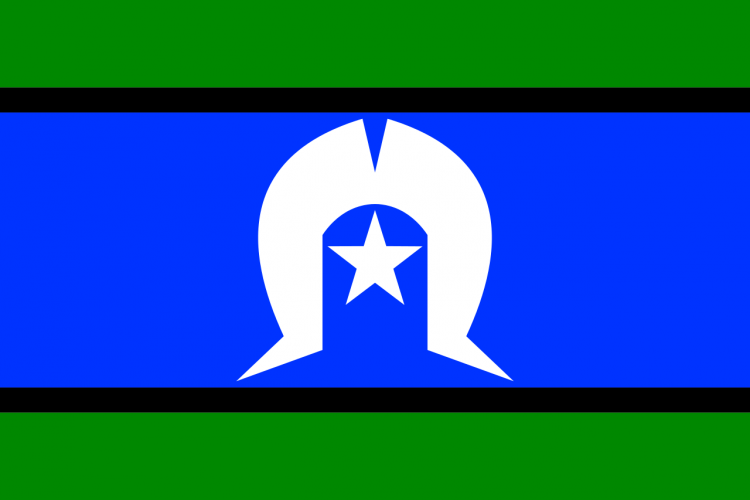
Aboriginal Flag
The Aboriginal flag was designed by Harold Thomas, a Luritja man from Central Australia. It was created as a symbol of unity and national identity for Aboriginal people during the land rights movement of the early 1970s.
The symbolic meaning of the flag colours (as stated by Mr Harold Thomas) are:
- Black: Represents the Aboriginal people of Australia
- Red: Represents the red earth, the red ochre and a spiritual relation to the land
- Yellow: Represents the sun, the giver of life and protector
In view of its increasing importance in Australian society, the Government initiated steps in 1994 to give the flag legal recognition. After a period of public consultation, the Government made its own decision in July 1995 that the flag should be proclaimed a “Flag of Australia” under section 5 of the Flags Act 1953. The flag was so proclaimed by the Governor General of Australia, William Hayden, on 14 July 1995.

Torres Strait Islander Flag
The Torres Strait Islander flag was designed by Bernard Namok, from Thursday Island.
The flag is emblazoned with a white Dari (headdress) which is a symbol of Torres Strait Islanders. The white five pointed star beneath it symbolises the five major island groups and the navigational importance of stars to these seafaring people.
The green stripes represent the land; the black stripes represent the people, and the blue the sea. The flag as a whole symbolises the unity of all Torres Strait Islanders.
The Federal Government initiated steps in 1994 to give the flag legal recognition. After a period of public consultation, the Government decided in July 1995 that the flag should be proclaimed a “Flag of Australia” under section 5 of the Flags Act 1953. The flag was so proclaimed by the Governor General of Australia, William Hayden, on 14 July 1995.
Story contributed by Deborah Byrne from the Department of Education. Published 2016.